21 Things You Need to Know Before Visiting Colombia
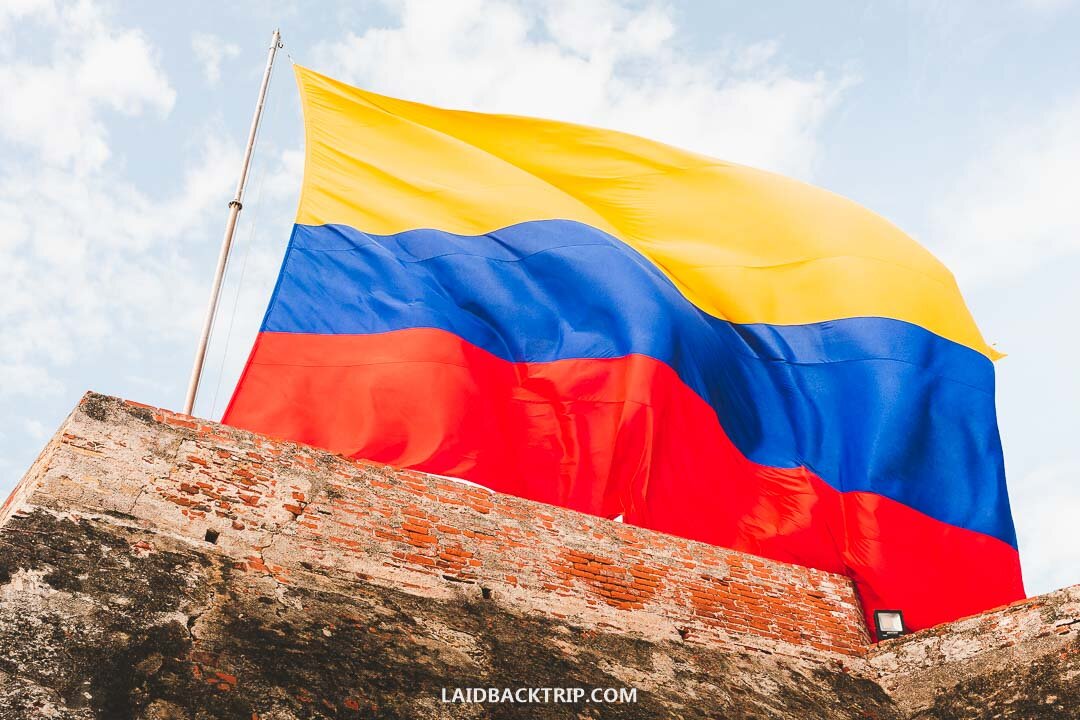
Colombia is a South American country with such rich diversity that instead of our planned one month visit, we stayed here much longer. An interest in traveling to Colombia grows every year, so we want to share with you 21 essential things you should know before planning a trip and visiting this beautiful country.
Colombia was the first destination we visited in South America, but we must admit, it stole our hearts. It is probably not a coincidence that many travelers have a very similar feeling.
Thanks to it, Colombia quickly gained a reputation of being one of the top travel countries on the continent.
Colombia is at the moment on the radar of many international travelers. Therefore we think you should know more about it before your trip.
Still, the country is unique, you can expect to deal with many specific situations, and in a nutshell, it is always better to be well-prepared.
Colombia is a very diverse country, and it offers an incredible number of attractions, from white sandy beaches to over 5000 meters high mountain tops.
But before you pack your stuff and set off, it is also good to know that customs, safety, or overall culture are very different from what you know by heart back at home.
This is why we’ve put together this list of things you need to know before visiting Colombia. It includes a few random tips we’ve collected during our travels.
Actually, there were 21 things you should know before traveling to Colombia, but we wrote this post on the road, and while editing it later at home, we came up with a few more, so the math does not match.
We hope you won’t mind and will enjoy this post!
#1 WATCH YOUR STEPS
We’ve never stumbled that many times when walking on streets as in Colombia. Some parts of the pavement are very often missing, and all of a sudden, there is just a hole, so watch your steps, especially in bigger cities.
What is even more important, be really careful after the dark as some less visited places still have very poorly lit streets, and it is very easy to fall.
You might think that broken pavements are something you can get used to after some time, but it is actually quite hard.
Especially when sightseeing in the city with a camera in hand.
This problem is more in cities such as Bogota or Popayan than in smaller colonial towns, but we recommend you to mind your steps all the time.
Cities are not wheelchair and stroller-friendly because usually, you must surmount a big step when you want to get from the road to the pavement.
That does not mean Colombia is not a destination for families. Still, you will very likely find it much more comfortable to carry your kid in a baby carrier rather than struggle with a stroller.
Also, do not expect that vehicles yield at pedestrian crossings; always look around as traffic can be crazy.
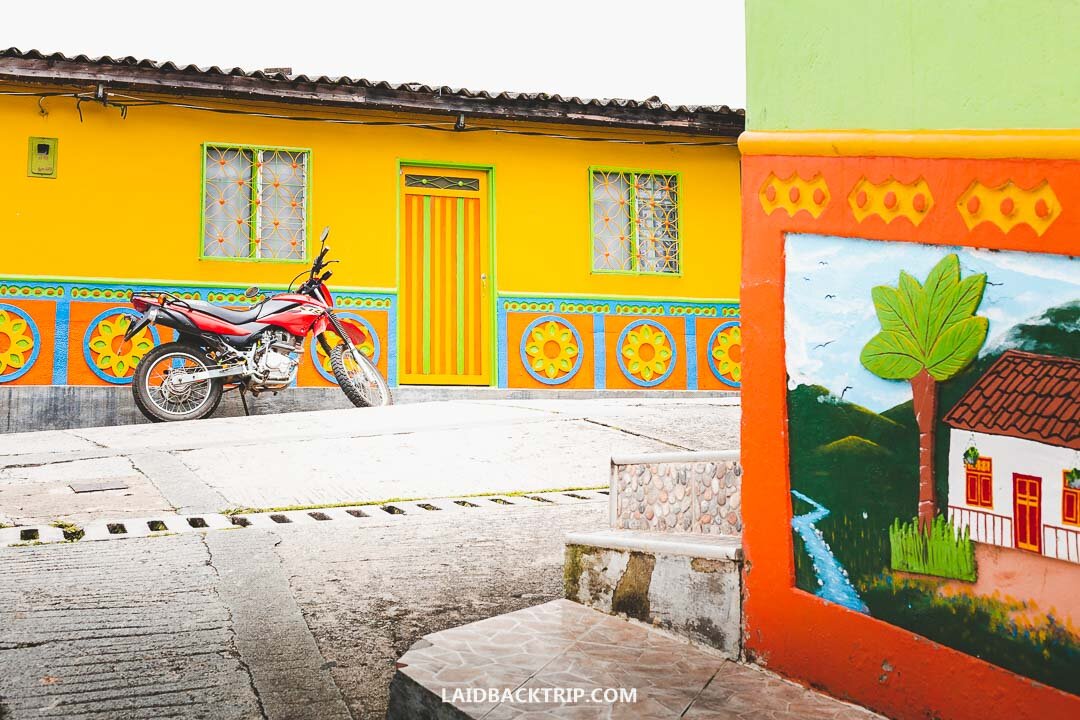
#2 COLOMBIA SAFETY
Colombia surely does not have the best reputation when it comes to safety. And it’s not just Colombia, but other countries on this continent as well.
On the other hand, the situation has been rapidly improving, and we are now confident that you should be fine when you follow all the basic safety rules.
Of course, mishaps happen, but they happen anywhere in the world, not only in Colombia.
By the way, when talking about safety, you should arrange your travel insurance before the trip!
The association with drug cartels and violence slowly disappears.
But of course, even though we could read that safety in Colombia is much better than it used to be, we were a bit concerned before our travels to Colombia.
It was our first experience with visiting a South American country, and some of the articles we could read online made us feel uneasy.
Fortunately, our fears did not fulfill.
In all countries around the world, it is useful to know that some areas, either in the city or a country in general, are better to avoid.
Still, when you use your common sense, travel with someone, follow mostly the backpacker’s trail, don’t wear shiny jewelry, and don’t walk lightheaded after dark, you should be fine.
You should always watch your belongings (once in Bogota, I left my phone in a jacket I had around my waist and was a victim of a sneaky robbery immediately), especially in crowded places and on public transport.
Always have your backpack with you, don’t store all valuables in one place, and pass everything over without resistance in case of robbery.
To keep your valuables safe, consider purchasing a money belt or anti-theft daypack.
Because we take lots of photos during our travels, it is impossible to keep the camera in the backpack all the time.
We usually use a smaller mirrorless camera when walking around the city and use the larger one when traveling in the countryside.
Also, when Martin takes photos, I try to be around, stay cautious, and pay attention to his surroundings (however silly it might seem).
TRAVEL INSURANCE – SIMPLE & FLEXIBLE
We never leave our home without travel insurance which is designed to help cover your expenses if something goes wrong on your trip.
World Nomads Travel Insurance has been designed by travelers for travelers, to cover your trip essentials.
Travel smarter and safer!
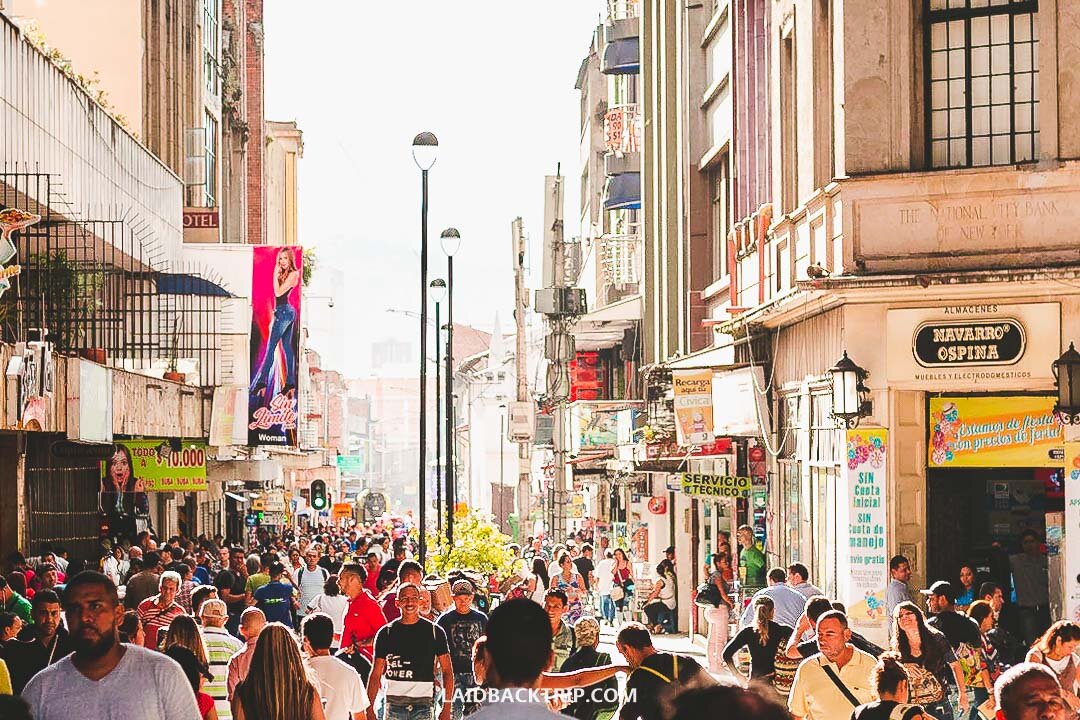
#3 FORGET YOUR DIET FOR A WHILE
Colombian food is hearty and filling. To put it mildly. In a nutshell, especially at the beginning of our trip, we felt a bit desperate, and it was hard to adapt to this change as this food was completely different from our usual eating habits.
Every meal we found was fried, not fresh, without herbs, or too sweet, not exactly what we usually eat.
Also, not every time we travel we can allow spending lots of time looking for a restaurant, that’s why we often ended up with food we were not 100% satisfied with.
After some time, the situation improved.
We learned some Spanish words, we always in restaurants looked for menu del dia which consists of soup, the main course with meat, salad, and juice (for about 10 000 COP) and for dinner, we usually cooked something on our own.
Later, we discover some really nice restaurants and generally, after we traveled more south of Medellin, the situation improved and we looked forward to eating again.
The street food usually consists of empanadas (fried pastry with meat and potato filling), which we usually bought when traveling all day on the bus, and arepas (dough made of maize), which we found particularly ugly.
Certainly, we do not want to put you off.
It is just good to know that Colombia is not a foodie destination (when traveling on a budget), such as the whole of Southeast Asia, although it is, of course, only our individual point of view.
#4 COLOMBIAN FRUIT IS DELICIOUS
Although we found food in Colombia a little bit dull, we must say that fruit is incredibly delicious.
We got addicted to papaya and pineapple, which became our everyday must-have, but we also tried native fruits such as guanabana, guava, lulo, tomato del arbol, and many more.
The best place where to find fresh fruit is in local markets.
Luckily, you will find at least one market with veggies and fruits in every town or city.
In our post dedicate to long term travel, we mentioned that it is quite important to maintain a daily routine – for us, buying delicious fruit was a thing we always looked forward to.
We are not afraid to say it was one of the reasons why we were able to travel for so long.
Not only in Colombia, but South America overall.

#5 LEARN SOME SPANISH BEFORE YOU GO
English is not widely spoken in Colombia. To be honest, we were unpleasantly surprised that literally, no one speaks English, quite often not even people working in the tourism industry.
After a first few days when we had a problem ordering meals in the restaurant or figure out how much a bus ticket cost, we came to an inevitable conclusion that it is necessary to learn some basic Spanish.
We recommend you to have at least a translator on your phone ready; otherwise, you won’t be able to get any help.
In case you have more time to prepare for your trip, either take a Spanish language course or buy a Spanish textbook.
Once you learn some basics, your trip will surely be more pleasant.
We traveled in South America for a year, and if there’s one thing we regret, it is a fact we hadn’t spoken Spanish fluently as we missed many opportunities to talk to locals more naturally.
#6 COLOMBIANS ARE VERY FRIENDLY AND HELPFUL
Colombians are very friendly and helpful. We are sure this is something every traveler to Colombia will confirm, and we also think it is one of the most important things to know before visiting the country.
When you ask for any information or advice, locals will try to help you immediately
And when they don’t know the answer, they will surely find a friend around who can solve your troubles.
We even experienced a situation when a bus driver gathered all staff from a bus terminal, only because he did not know an answer to our question himself.
If you have a problem or don’t know your directions, Colombians will do their best to help you out.
#7 COLOMBIA IS NOT A CHEAP COUNTRY (AS IT USED TO BE)
Colombia is not that cheap when it comes to traveling. Don’t expect similar prices as in Southeast Asia for sure.
Bus tickets are pretty expensive and although the food and accommodation are slightly cheaper than in Europe, traveling in Colombia cost us more than we expected.
It is probably highly individual opinion, but we can imagine more friendly countries for our bank account as budget travelers.
The entrance fee to San Agustin Archaeological Park is not very budget-friendly, and adventure activities in San Gil don’t come cheap either.
Sadly, the quality of services often does not reflect the price, but it is the same as in other countries. Some services are exceptional; some are very poor.
Even though Colombia is not the cheapest country we’ve ever visited, it is by far not the most expensive, and the visit was totally worth it.
Simply put, Colombia is not Brazil or Chilean Patagonia, and it’s still a very affordable destination, though it’s not as cheap as you might expect.
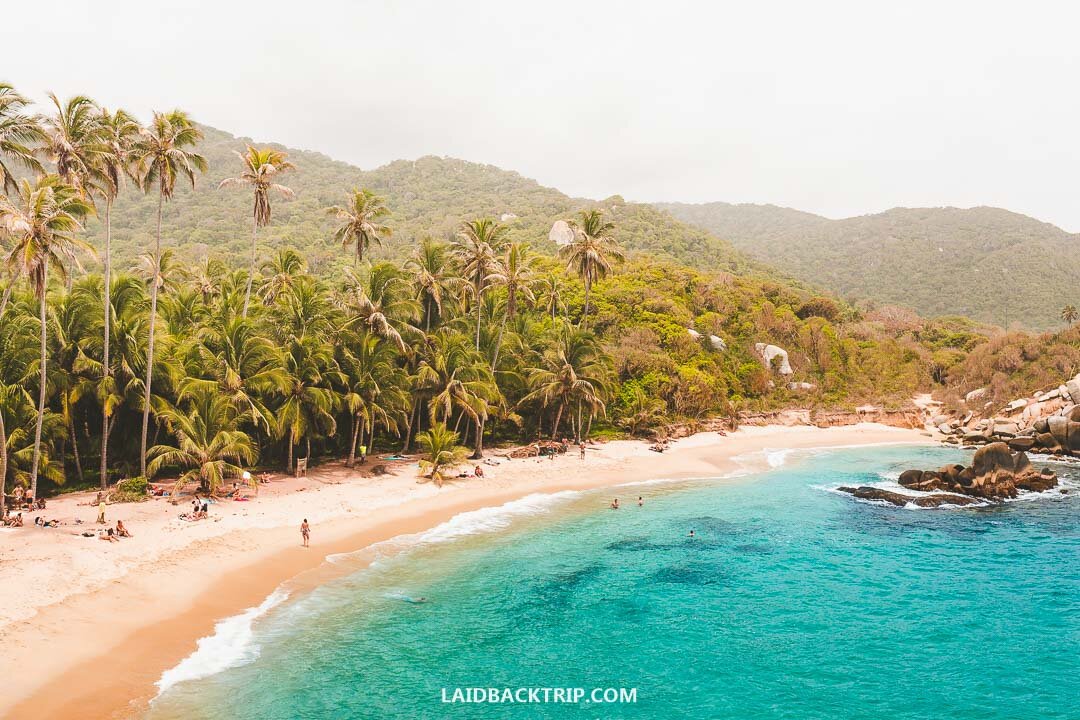
#8 PUBLIC TRANSPORT IS SLOW
It is very likely that you will travel around Colombia by public transport. And although it is possible to get by bus to almost all destinations, expect tiring journeys, winding and bumpy roads and a lot of sitting.
When traveling by bus, be prepared that the journey will be more than slow.
Our average travel speed was less than 40 km/h. The distance you can cover per day is limited, so don’t forget to plan your itinerary accordingly.
After 4 days in Cartagena, we took a 15-hour bus to Medellin. The journey was long and tiring, and eventually, we found out that flight tickets were only slightly more expensive and would have saved us a bumpy ride.
#9 WEEKENDS AND HOLIDAYS GET BUSY
Colombians love to travel, especially in large groups. They also love to celebrate. It seemed to us that every weekend local people decide to take all their family and friends for a trip.
It is an awesome habit, but some places were, thanks to it, super-crowded, and accommodation in the most popular destinations booked.
Try to avoid long weekends, and if you travel on Friday or Saturday, book in advance.
Also, when you plan your itinerary, check out national holidays, and make sure you reserve tours or hotels, just in case.
Busy weekends have one big advantage, though. Some places and areas are safer.
That’s why, for example, we hiked to Cerro de Monserrate in Bogota or explored Arvi Park in Medellin during the weekend, even though the trails were busy.
#10 SUGAR IS IN EVERYTHING
One of the first words we learned in Spanish were ‘sin azucar’, which means without sugar. We found everything in Colombia too sweet, to be honest.
From a classic bread to white yogurt, you must expect that sugar is an ingredient that is not missing.
What more, there’s more sugar in it that you are probably used to.
Even if you are a sweet tooth, you might find the amount of sugar higher than acceptable. But maybe not. Feel free to let us know your thoughts in the comment section.
We had to make an effort while shopping and look for exceptions, which took us quite a lot of time.

#11 COLOMBIA IS A DIVERSE COUNTRY
We have never believed we would enjoy traveling in Colombia that much. The country is incredibly diverse, and it offers a place for every type of traveler.
You’ll find in Colombia the Caribbean Sea, Pacific Ocean, wonderful sandy beaches, photogenic wildlife, diverse flora, mountain ranges, volcanoes over 5000 meters high, deserts, colonial cities, wax palms, indigenous tribes, and much more.
Generally speaking, Colombia is a destination for everyone, and creating the perfect Colombia itinerary is incredibly hard, as it is simply impossible to see everything quickly.
Nature and the fact Colombia is rich in architecture but also archaeological places means only one thing. The country is getting every year more and more popular.
#12 HOT WATER DOESN’T MEAN HOT IN THE TRUE SENSE OF THE TERM
Does your accommodation advertise a hot shower? Let’s say that a hot shower in Colombia means rather tepid water.
It was a real treat when we found a place with warm water as it happened very sporadically.
It is ok in places such as the Tatacoa Desert, where temperatures often exceed 30 degrees Celsius.
Still, we would have appreciated warmer water in colder areas such as Bogota or Manizales.
On the other hand, we realize that we always stayed in cheaper hotels.
In case your Colombia budget is higher, you might have a different experience as we believe the service is better.
Is It Safe To Travel To COLOMBIA Right Now? (November 2022 Update)
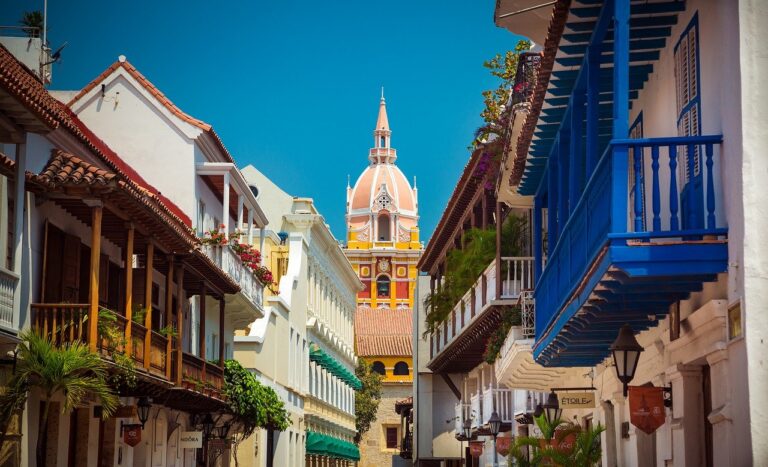
As a rule of thumb, do not travel to that remote paradise or jungle destination you saw online if a local tells you not to. Most of the unfortunate situations that have happened to tourists in Colombia are due to travelers going to places against the locals’ advice.
With a seven-color sea (San Andrés), a rainbow river (Caño Cristales) and 54,871 registered species, 3,625 of them unique in the world, Colombia is one of the most amazing places in South America, and the country with the second largest biodiversity in the planet.
Is it safe to travel to Colombia – Latest Safety report
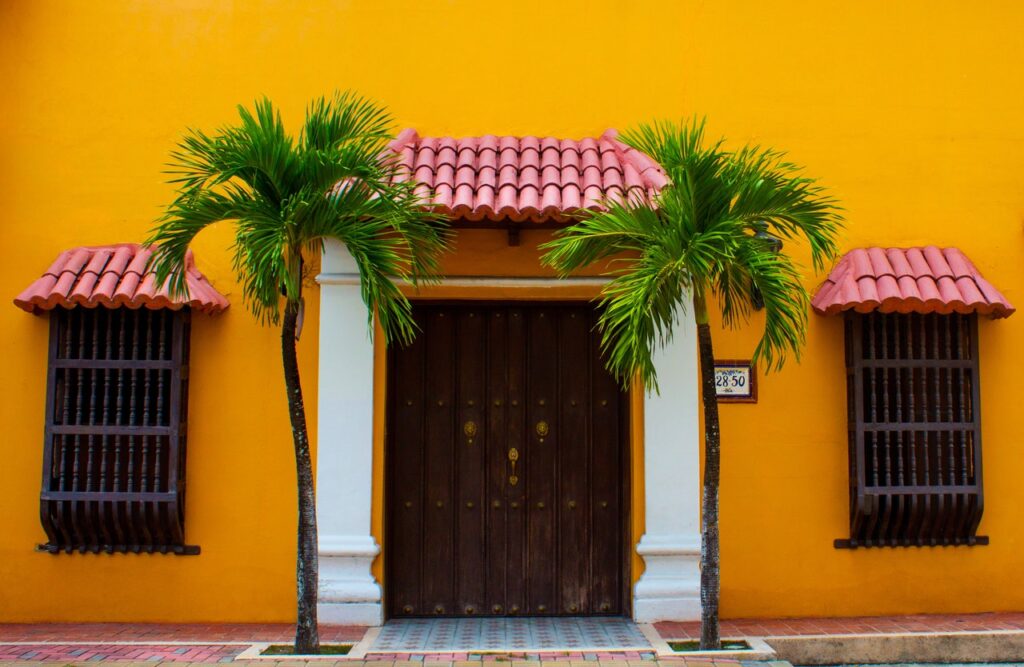
November 11 – President Petro calls for “total peace” to Colombia.
Since diplomatic ties between Colombia and Venezuela were cut in 2019, security along the border has deteriorated drastically, causing an increase in fighting and displacement as armed groups compete for the lucrative illicit trade in people and goods.
The National Liberation Army (ELN), the largest guerrilla organization active in the region, and the Colombian government plan to hold negotiations later this month, leaving people on both sides of the border optimistic that the decades-long cycle of war can be ended.
The first direct talks in six years took place Nov. 1, when newly elected Colombian President Gustavo Petro met his Venezuelan counterpart Nicolas Maduro in Caracas.
Silleteros are back!
520 florists participated in the 65th edition of the Silleteros Parade 2022 on August 15, attended by 800,000 spectators spread along one of the highways of the zero zone of Medellín.
This marked the return of physical attendance at the event in the city after two years of pandemic. The event highlights the farmers who came down from the mountain carrying their products. Today, they are beautiful flower arrangements that they carry along a route of 2.4 km along the banks of the Medellin River.
Is it safe to travel to Bogotá?
Bogotá is the largest and most cosmopolitan city in Colombia. Criminal acts such as terrorism are rare, but visitors should be wary of pickpockets,
Is it safe to travel to Medellin?
Medellin is the capital of Antioquia and the second largest city in the country. Again, beware of pickpockets, especially in crowded areas.
Is it safe to travel to Cartagena?
Internationally acclaimed Cartagena is a very safe city. Street vendors may try to rip you off for beer and other items. But just mention the police and prices will be lowered.
Why visit Colombia in times of COVID?
First of all, there are no entry restrictions in Colombia. Also, there is something for all types of travelers. From the Caribbean beaches and Andean mountain peaks to rainforests and other natural wonders. And, of course, coffee! In case you decide to visit Colombia this year, the CDC recommends you be vaccinated.
Updates archives
October 21 – 20 killed and 15 injured in Colombia bus accident
A bus overturned on the Pan-American Highway in southwestern Colombia, killing at least 20 people and injuring 15 others.
The bus was traveling between Tumaco, a port city in southwestern Colombia, and the touristic city of Cali, 320 kilometers northeast, when the tragedy occurred Saturday.
“Unfortunately, we have a toll of 20 people dead,” said Captain Albertland Agudelo of the Nariño department traffic police.
October – Hundreds of Environmental Defenders Were Killed in Colombia in the Last Decade, according to a recent report.
According to the most recent study by the British human rights NGO Global Witness, Colombia is the country with the second highest number of environmental leaders murdered in the last decade, after Brazil. Since 2012, a total of 1,733 activists have been slain globally, with Latin America accounting for 68% of all incidents.
Few murderers are brought to justice because governments fail to properly investigate the murders. According to the report, authorities either ignore or deliberately obstruct investigations into murders, typically “due to the collusion between corporate and state interests.”
“All over the world, Indigenous peoples and environmental defenders risk their lives for the fight against climate change and biodiversity loss. Activists and communities play a crucial role as a first line of defence against ecological collapse,” said Mike Davis, Global Witness’ CEO.
September – 17 people have been murdered over the last three days in Colombia
Authorities in Colombia said at least 17 people have been killed in a series of violent episodes during the past three days.
Six people were shot dead by gunmen Monday morning in a bar in the tourist city of Barranquilla on Monday morning.
According to police, the attack on members of the rival drug trafficking organization Los Costeños was perpetrated by the powerful drug trafficking gang Gulf Clan.
A teacher, his wife and two children were killed Sunday morning by a group of attackers in the Santander region in the north of the country, according to local authorities.
In an apparent act of revenge, five Venezuelan migrants accused of being involved in the killings were killed by vigilantes.
August – Two Dutch tourists passed away in Cartagena
The mayor’s office of Cartagena reported the death of Dutch tourists Robert Gerrit Kootte and Nienke Guri Trishna Bawa, who are the subject of an investigation by the Attorney General’s Office.
According to the information known so far, the tourists arrived in the city on Saturday, August 20, and were taken by the emergency room to the Medihelp clinic on Monday, where they died.
On Monday evening, the death of the 29-year-old woman was registered, and on Tuesday morning her 31-year-old partner died.
According to the first versions, the tourists, who had been in the city since last weekend, would have died of poisoning.
The Honorary Consul is in contact with the family of the tourists providing full support.
July – The country is better than ever
After the presidential elections on June 19, 2022, where a certain political unrest was expected given that a left-wing candidate won for the first time in history, the country and its tourist cities have remained calmer than ever.
Those interested in visiting can take advantage of the great current currency exchange that favors Americans and Europeans mostly.
the weather is perfect and Colombians are happy to welcome tourists back with open arms
June – Presidential elections in Colombia
Presidential elections were held in Colombia on May 29, 2022. Since none of the presidential candidates received at least 50% of the vote, a runoff election between the two leading candidates, Gustavo Petro and Rodolfo Hernández Suárez, is scheduled for June 19, 2022.
This is the first time that a left-wing candidate could win the presidency, which has never happened before in the country’s political history. It is, therefore, to be expected that there will be some political unrest after June 19.
Tourists and other visitors are advised to take increased security precautions during the last 2 weeks of June.
May – Armed strike in Colombia
On Thursday, May 5, the Clan del Golfo, also known as the Gaitanista Self-Defense Forces of Colombia, called a “4-day armed strike.”
The pamphlet stated that it was forbidden to “open a business of any kind” and to “use any means of transportation.”
The statement ended with the threat of “unfavorable consequences” for those who do not comply with these measures.
“Armed strikes” in Colombia are defined as actions by illegal armed groups, such as guerrillas, paramilitaries or drug traffickers, in which they block roads, restrict mobility, threaten commercial establishments and force the suspension of classes at colleges and universities.
The armed strike has ended for now, but authorities are asking the public to exercise increased precautions when traveling to non-tourist cities in the coming weeks.
April 9 – Latest travel advice from the U.S. State Department
The U.S. State Department has issued a travel warning against Colombia “due to crime, terrorism, Covid-19, civil unrest and kidnapping,” which is true, if you are visiting far away places or flung urban ghettos that seem to attract some tourists for the wrong reasons.
The notice also warns against traveling to the departments (states) of Norte de Santander and Cauca (we locals agree!), with the exception of Popayán (Cauca), also known as the “White City” (yes, in the same sense as the Lord of the Rings).
Again, if you are in a city, in a town near a city, or on the Colombian Atlantic coast, there is no reason why anything bad should happen to you.
December 26 – First cases of Omicron detected in Colombia
On Monday, December 20, the first cases of the newly discovered Omicron variant were confirmed in Colombia. They were identified in a U.S. citizen and two Colombians visiting Cartagena and Santa Marta.
It was confirmed that the cases came from abroad – two from the U.S. and one from Spain. At the moment, there is no evidence of community circulation.
Even though the transmission rate remains relatively low in Colombia, the country’s Minister of Health Fernando Ruíz called out to its citizens to take extra safety precautions. He also recommended booster shots for everyone over the age of 18.
November 19 – Colombia now requires vaccination certificates to enter bars, restaurants, or venues
On Tuesday, November 16, Colombia began to require COVID-19 vaccination certificates to enter bars, restaurants, and other public venues, including cinemas, theaters, or sports stadiums.
The new measures apply to those 18 and over. Starting November 30, it will also affect children over 12 years of age.
The decision came along with the government’s aim to immunize all citizens against the virus. So far, only around 45% of Colombians and 6.4% of minors have been vaccinated fully.
October 11 – COVID-19 cases dropping in Colombia
Colombia suffered a spike in COVID-19 infections in mid-June when over 30,000 new cases were reported daily. However, since June 28, the number of infections has been dropping.
Yesterday, October 10, the country reported 1,587 new coronavirus cases, which is around 100 less than on the same day a month ago. Also, the number of deaths caused by the virus seems to be constantly decreasing. Yesterday, Colombia reported 38 COVID-19 fatalities, while a month ago, it was about 10 more.
September 7 – Colombia reports the lowest COVID-19 death toll since June 2020
Colombia reported the lowest number of COVID-related deaths since June 2020, announced Fernando Ruiz, Colombian Minister of Health, on Sunday, September 5.
On that day, 48 patients died of COVID-19, while another 1,669 people tested positive for the virus. The country had not reported fewer than 50 fatalities attributed to coronavirus since June 13, 2020.
On the other hand, Colombia is concerned about the new, more contagious COVID-19 strains. And not only the Delta variant, which has been responsible for the current surges in cases in the U.S. and Europe. But also the Mu variant, which has recently been declared as ‘of interest’ by the WHO.
August 22 – Colombia approved a third dose of a COVID-19 vaccine on August 21
Colombia approved a third booster dose of the coronavirus vaccine, confirmed the Ministry of Health Fernando Ruiz at a press conference on Friday.
Ruiz clarified that the third dose will be offered to residents with underlying conditions that “generate or lead to immunosuppression, such as heart, kidney, pancreas, lung, intestine, liver and bone marrow transplantation after the first two years.”
The official also mentioned that the government weighs the possibility of offering this benefit to the healthy elderly too. But it has not been confirmed yet.
Source https://www.laidbacktrip.com/posts/things-to-know-before-visiting-colombia-travel
Source https://www.travelinglifestyle.net/is-it-safe-to-travel-to-colombia-right-now/
Source